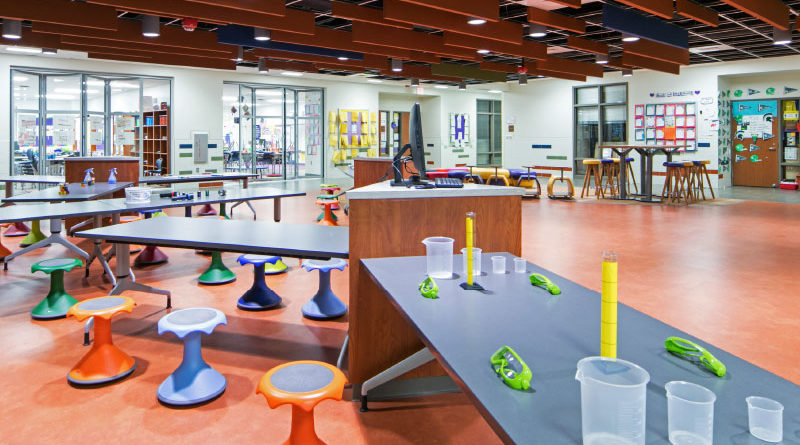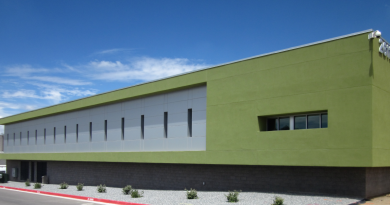Designing for the Pre-Operational Student
By Dalane E. Bouillion
Pre-kindergarten is more than en vogue; it has become a priority recognizing that Early Childhood Education supports the formal foundational requirements for future success. The readiness skills that continue to develop and that are used throughout life are experienced during this delicate time of childhood. Early Childhood Education is generally grounded in a constructivist approach, which is a theoretical understanding of cognition, or how young children begin to construct knowledge and begin to understand their own meaning of the world. Constructivists subscribe to the philosophy that “knowledge comes neither from the subject nor the object, but from the unity of the two” 1. Meaning, students have the ability to use their experiences and self-reflection to build schema; schema, in turn, allows for deeper understanding.
Young children make sense of their world by connecting the known to the unknown. With each new experience, perception changes and builds more complex understanding. Constructivism implies active learning, where students are recognized “as thinkers with emerging theories about the world” 2 . Jean Piaget, Swiss psychologist, is known for his four Stages of Cognitive Development. 3 Based on his observations of young children, he classified cognitive stages into four distinctions. Roughly, they can be described in the table below:

Piaget, as he observed young children, thought of them as “little scientists” because they were comfortable making observations and responding to the success or failure of the manipulation of objects in order to learn. This notion supports evolving instructional practices that our newest generation is requiring. Methodologies have evolved to support active learning, and lesson design teaches, with precision, the attributes that help create the conditions for students to volunteer their time, attention and commitment in order to engage in academic content. 4. Regardless of the pedagogical approach, students are being required to inquire in order to master today’s standards. They must experience and then reflect on their experience to build schema that can be translated into mastery learning.
Curricula Drives the Design
The intellectual development of children, together with curricula, should drive the design process for an early education facility. By understanding the evolution of the acquisition of knowledge and how to introduce academic content, early childhood learning centers can set young students on a path for a successful educational career. Understanding how children perceive and interact in the world is critical to the space we create for them. Specialized learning centers have become commonplace in order to provide preoperational stage students areas of discovery while at school. What is learned in small group settings builds on schema in order to master real-world concepts. The soft skills learned here also support the interpersonal needs of all individuals and teams.
Architects and educators should be working together to design space for student experiences that will expose them to future careers early in life through their classroom experiences in order to assist them with choices. Some might say this is too soon to think about careers, but in the 8th grade all students in the state of Texas must declare their intended high school endorsement or area of concentrated study based on their areas of interest. Knowing this, let us revisit some of the traditional learning centers that have defined early childhood classrooms. Although educators value the use of this type of active learning, no special architecture usually exists to support this type of learning experience. Educators are accustomed to looking at the four corners of the room they inherit, and deciding how to best use their assigned space. One corner becomes a reading area, one for dramatic play, one focused on language arts, and one on science. Then, they find a place to incorporate math and social studies into the designated space. How can we best design for future classrooms that will support the learning requirements of future generations?
The dramatic play station allows students to understand symbols and explore roles such as family member, societal figure, historical character, artist, animal, etc. This learning area can be located within each classroom, or it could be designed as a larger shared space where multiple classes are scheduled for use. Think of a modified small black box theatre area that allows for costumes and the use of props in order for students to build upon their prior knowledge and develop communication skills. It could have a small portable raised platform for more formal drama play or for presentations that culminate an intended instructional purpose. This center builds a set of soft skills that industry continues to request of their new hires. With a small black box theatre, we can create a specific space where students can respond to a given a situation or use as a free play opportunity to allow for creativity. These experiences build understanding regarding key literary concepts such as setting and time periods. No longer will dramatic play be dependent on “home center” content where everything revolves around the wooden kitchen. This specific center supports fine arts and humanities, while providing for the next generation of thespians.

The blocks station should become much more than a place in the corner of the classroom where boys want to watch a tall stack of wooden wedges fall. It should recruit both boys and girls, and it should be designed as a part of the classroom with future architects and engineers in mind, using delineated flooring with a soft surface so that self-designed skyscrapers can be built. A multitude of building materials should be available in sturdy well-designed storage spaces that allow for creativity. Here, properties of physics can be experienced. The beginnings of geometry are discovered. Design should be the intent of the station, and students should be able to work to replicate drawings and diagrams of famous landmarks. White boards should flank the area, allowing students to draw and think as they build.

A small dedicated library works to define comfortable reading and research spaces so that all students begin to connect content to context and the use of technology for almost all answers in their world. They can write and publish in this space using technology and paper/pencil as well as practice their oratory skills with peers. This space should function as the hub for all other stations, centrally located to allow research for all student interests and curricular foci. It should be flexible with inviting furniture that allows the lesson design to dictate the organization of the area. Small yet inviting displays should be designed within the area to allow for literature displays that help capture the lesson intention. Reading nooks should foster both independent reading and partner reading. Future autobiographies start here. Book clubs are born here, as well as the initiation of an appreciation for classic literature.
The science station allows for independent discovery and clearly connects with our future scientists. This area should be designed with natural light, allowing for the best possible life science environment. Students use their senses here; they use the scientific method. They predict how tall their lima bean stalk will grow, and they identify each of the plant parts. They understand basic needs of the plant and they learn to record data. They chart the weather and they begin to build schema around seasons. By designing an area where the floor is delineated for both wet and dry capabilities and where water is accessible, a student quickly learns the difference between sinking and floating and schema develops to start the prediction process of various materials as they are placed in water. Displacement concepts are born in this center, and so are the primary thoughts around matter, mass and weight. This area helps to support students who are drawn to the areas of science, technology, engineering and mathematics (STEM), knowing also that the foundation for future hydrologists and oceanographers are born here.
Each of these learning areas encourages intellectual development, supports the building of schema and provides for needed vocabulary. For each of the described learning centers, vocabulary and experience work together to build schema, which provides knowledge. Memorable and engaging experiences lead to mastery learning. By providing the most appropriately designed spaces, teachers can quickly plan for relevant, real world lessons and complex learning experiences. It is never too soon to provide the best experiences for students. Exposure to learning experiences that promote thinking, questioning and require complex reasoning can never occur too soon.
References
1. Brooks, J.G. & Brooks, M.G. (1999), p. 22. In search of understanding: The case for constructivist classrooms. Alexandria, VA: Association for Supervision and Curriculum Development.
2. Brooks, JG. & Brooks, M.G. (1999), p. 17. In search of understanding: The case for constructivist classrooms. Alexandria, VA: Association for Supervision and Curriculum Development.
3. Piaget’s stages of cognitive development. (n.d.). Retrieved from https://www.boundless.com/psychology/textbooks/boundless-psychology-textbook/human-development-14/theories-of-human-development-70/piaget-s-stages-of-cognitive-development-270-12805/
4. Schlechty, P. (2001). Shaking up the schoolhouse. San Francisco: Jossey-Bass.
About Dalane Bouillion
Dr. Dalane E. Bouillion received all three of her educational degrees from Stephen F. Austin State University in Nacogdoches, Texas. Her 23 year public education career includes serving as teacher, assistant principal, principal and associate superintendent of curriculum and instruction. Most recently, Dalane translates her educational experience into school architecture as a member of the design team at VLK Architects, ensuring current methodologies are considered throughout the design process so that academic program needs are realized.




